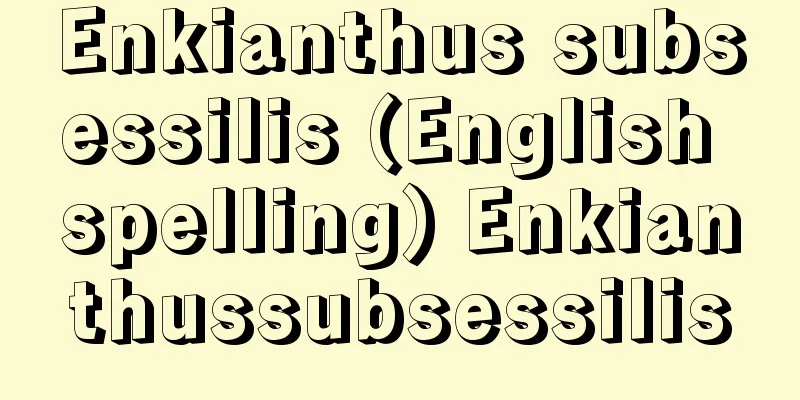Ike no Taiga

|
A literati painter from the mid-Edo period. Born on May 4, 1712, as a townsman in Kyoto. His surname was Ikeno, his childhood name was Matajiro, and his nickname was Akihira. He changed his given name to Ko, Kin, or Mumei, and his pen name to Koshoku, Kimin, or Kasanari, and had a very large number of pen names, including Shisei, Iryu, Kaan, Kyuka, Kyukasansho, Kashou, Taiga, Takei, Gyokubai, and Mitake Dosha. His temple names included Taikado, Taigado, and Shukido. His father, Ikeno Kazaemon, was a wealthy townsman who served as a subordinate to Nakamura, a Kyoto government official in the Ginza district, but he died when he was young, and he was raised by his mother, who was passionate about education. At the early age of seven, he was praised for his calligraphy by Kodo Gencho, the 12th abbot of Uji Manpukuji Temple, and was known as a child prodigy. He first taught himself how to paint using Chinese woodblock prints such as the "Hachishu Gafu," and at the age of 15, he was already showing his natural talent by drawing fan paintings to make a living. He soon became interested in the new painting techniques of the Ming and Qing dynasties in China, especially those of the Southern School, and studied them in earnest with like-minded artists. He was influenced by the literati painter Yanagisawa Kien of the Yamato Koriyama Domain, and began to attract attention as a rising artist. At the age of 26, he traveled from Edo to the Tohoku region, where he gained a reputation for his finger paintings. After returning to Kyoto, he traveled further to the Hokuriku region, and in 1750 (Kan'en 3), at the age of 28, he visited the literati painter Gion Nankai of the Kishu Domain. Through these repeated trips, he deepened his observations of nature, interacted with leading figures from all over the country, and cultivated his character. At the age of 29, he studied Zen under Hakuin Ekaku, and around this time he married Machi, the daughter of the Gion poet Yuri, and built a hermitage in Makuzugahara. He taught himself through imported Chinese art treatises and painting manuals, as well as a mixture of authentic and counterfeit Chinese paintings, and was particularly inspired by the painting techniques of the imported Qing painter Ifukyu, who established his own unique style. From his 30s onwards, Taiga entered a period of remarkable activity that earned him the title of leader of the emerging literati painting (Nanga) school. Taiga's style was not simply a faithful imitation of the Southern School of Chinese painting, but a proactive embrace and synthesis of Japanese decorative painting techniques such as those of the Tosa and Rinpa schools, as well as the Momoyama period's screen painting, and even the newly discovered realistic techniques of Western painting. His works are characterised by free-flowing, soft lines, a combination of bright and clear colours, and a deep, expansive grasp of space. He left behind many dignified masterpieces with a variety of themes and styles, including "Scenes of the Wonders of Mutsu" (1749) and "True View of Kojima Bay," which depict Japanese nature with a rich poetic feeling, as well as Chinese-themed screen paintings such as "Landscape and Figures in Sliding Doors" (National Treasure, Henjokoin Temple, Mt. Koya), "Pavilions and Landscapes (Yueyang Tower and Suio Pavilion) Screen" (National Treasure, Tokyo National Museum), and "Outline of the Victory of Xiaoxiang Screen," as well as small works such as "Jubenjo" (A Collection of Ten Expeditions) (a National Treasure along with Yosa Buson's "Jugijo"), which showed his talent as a literati painter, and "Tōzan Seiinjo" (A Collection of Fan Paintings of Eight Views of Xiaoxiang). Taiga's calligraphy, which is unconventional and conveys his generous personality, is also highly regarded as a shining example in the history of calligraphy in the Edo period. He was also particularly close friends with the seal engraver and painter Gao Fuyō and the calligrapher and painter Han Tenju, and together they trekked the three sacred mountains of Mt. Hakusan, Mt. Tateyama, and Mt. Fuji, leaving behind travel diaries and sketches of some of their experiences (The Trip to the Three Mountains). Among his pupils were Kimura Kenkadō, Aoki Shukuya, Noro Kaiseki, and Kuwayama Gyokushū, and he also had a direct and indirect influence on many of his successors, making a major contribution to the rise of Japanese Nanga painting. His wife, Machi, was known as Gyokuran (1728-1784), and was known as a female painter who excelled in elegant landscape paintings. She died on April 13, 1770. [Tadashi Kobayashi January 19, 2017] "Ike Taiga Painting Collection, 5 volumes, edited by Tanaka Ichimatsu et al. (1957-1959, Chuokoron-Bijutsu Shuppan)" ▽ "Ike Taiga, by Matsushita Hidemaro (1967, Shunjusha)" ▽ "Ike Taiga, by Yoshizawa Tadashi (1973, Shogakukan)" ▽ "Complete Collection of Japanese Art Paintings 18: Ike Taiga, by Sasaki Johei (1979, Shueisha)" Source: Shogakukan Encyclopedia Nipponica About Encyclopedia Nipponica Information | Legend |
|
江戸中期の文人画家。享保(きょうほう)8年5月4日、京都の町人として生まれる。姓は池野、幼名又次郎、通称は秋平。名を耕、勤、無名、字(あざな)を子職、公敏、貸成と変え、号は子井(しせい)、為竜(いりゅう)、葭庵(かあん)、九霞(きゅうか)、九霞山樵(さんしょう)、霞樵(かしょう)、大雅、竹居、玉梅、三岳道者などとすこぶる多い。堂号は待賈堂(たいかどう)、大雅堂、袖亀堂(しゅうきどう)など。 父池野嘉左衛門(かざえもん)は京都の銀座役人中村氏の下役を務めた富裕な町人であったが、幼いころに死別、教育熱心な母の手で育てられた。数え年7歳のときに早くも宇治万福寺12世の杲堂元昶(こうどうげんちょう)からその能書を褒められるなど、神童と評判を得たほどである。絵は初め『八種画譜』などの中国木版画譜を通じて独学、15歳のときには扇絵(おうぎえ)を描いて生計の足しとするなど、若くしてすでに天賦の才能を示している。やがて中国の明(みん)・清(しん)の新しい画法、とりわけ南宗(なんしゅう)画法に傾倒して同好の士と本格的な研鑽(けんさん)を積み、大和(やまと)郡山(こおりやま)藩の文人画家柳沢淇園(やなぎさわきえん)の感化を受けながら、新進の画家として注目されるようになる。26歳のとき江戸から東北地方に遊んで得意とする指頭画(しとうが)に評判をとり、帰洛(きらく)後さらに北陸地方を遊歴、28歳の1750年(寛延3)には紀州藩に文人画の大家祇園南海(ぎおんなんかい)を訪れるなど、たび重なる遠遊に自然観察を深め、各地の一流の人物と交渉をもち、人格を陶冶(とうや)した。29歳のとき白隠慧鶴(はくいんえかく)に参禅、このころ祇園の歌人百合(ゆり)の娘町(まち)と結婚、真葛(まくず)ヶ原に草庵(そうあん)を結んだ。舶載された中国の画論や画譜、あるいは真偽取り混ぜた中国画蹟(がせき)を通じて独習し、来舶清人伊孚九(いふきゅう)の画法にことに啓発されながら独自の作風を確立した大雅は、30歳代以降、新興の文人画(南画)派の指導者と目されるに十分な目覚ましい活躍期へと入っていく。 大雅の作風は、単に中国の南宗画様式を忠実に模倣したものではなく、桃山以来の障屏画(しょうへいが)をはじめ土佐派や琳派(りんぱ)などの日本の装飾画法、さらには新知見の西洋画の写実的画法までをも主体的に受容し、総合したもので、のびのびと走る柔らかな描線や明るく澄んだ色彩の配合、さらに奥深く広闊(こうかつ)な空間把握をそのよき特徴としている。日本の自然を詩情豊かに写した『陸奥(むつ)奇勝図巻』(1749)や『児島湾真景図』、中国的主題による『山水人物図襖(ふすま)』(国宝、高野山(こうやさん)遍照光院)や『楼閣山水図(岳陽楼・酔翁亭図)屏風(びょうぶ)』(国宝、東京国立博物館)、『瀟湘(しょうしょう)勝概図屏風』などの障屏画、さらに文人画家の本領を発揮した『十便帖(じゅうべんじょう)』(与謝蕪村(よさぶそん)の『十宜帖(じゅうぎじょう)』とともに国宝)、『東山清音帖(とうざんせいいんじょう)』(瀟湘八景図扇面画帖)などの小品と、さまざまな主題や形式からなる品格の高い名作を数多く残している。また、おおらかな人柄を伝える俗気ない大雅の書も、江戸時代書道史にひときわ光彩を放つものとして評価が高い。また篆刻(てんこく)家にして画家の高芙蓉(こうふよう)、書家にして画家の韓天寿(かんてんじゅ)ととくに親密に交友し、白山、立山、富士山の三霊山をともに踏破して、その一部の紀行日記とスケッチを残している(三岳紀行)。門下に木村蒹葭堂(けんかどう)、青木夙夜(しゅくや)、野呂介石(のろかいせき)、桑山玉洲(くわやまぎょくしゅう)らを出し、さらに後進の多くに直接・間接の影響を与えて日本南画の興隆に大きく貢献した。なお、妻の町は玉瀾(ぎょくらん)(1728―1784)と号し、大雅風の山水画をよくする女流画家として聞こえた。安永(あんえい)5年4月13日没。 [小林 忠 2017年1月19日] 『田中一松他編『池大雅画譜』全5帙(1957~1959・中央公論美術出版)』▽『松下英麿著『池大雅』(1967・春秋社)』▽『吉沢忠著『池大雅』(1973・小学館)』▽『佐々木丞平著『日本美術絵画全集 18 池大雅』(1979・集英社)』 出典 小学館 日本大百科全書(ニッポニカ)日本大百科全書(ニッポニカ)について 情報 | 凡例 |
<<: Ikenodaira [Hot Spring] - Ikenodaira
Recommend
Belvedere Palace - Belvedere Palace
A Baroque palace in Vienna, the capital of Austria...
Elaphe quadrivirgata (English spelling)
...A non-venomous snake of the Colubridae family ...
old books
...General term for books that are generally circ...
jiffy pot
...Large pieces of potting soil or pumice are pla...
Omido (Mount Tsukuba) - Omido
...His character as the guardian deity of agricul...
Robert of Chester
...In Toledo and Sicily in Spain, as well as in c...
Tanzania - Tanzania (English spelling)
A country in East Africa consisting of Tanganyika...
van de Cappelle, J.
...Furthermore, the cutthroat free competition to...
Tejima Seiichi
Year of death: January 23, 1918 Year of birth: Nov...
Iga Kokubunji Temple
...Former name of province. Ishu. Currently, it i...
Okuma [town] - Ookuma
A town in Futaba County, central Hamadori, eastern...
Storm petrel - Storm petrel
A general term for birds in the Hydrobatidae famil...
Ladybird
… [Chokane Hayashi] [Name and Folklore] Ladybugs ...
Paulus Manutius
...Also, the small book format (octavo) that he p...
Thematologie (English spelling)
...This refers to a type of work in which a certa...







![Rustica (English spelling) [Italy]](/upload/images/67cd30734cd77.webp)

